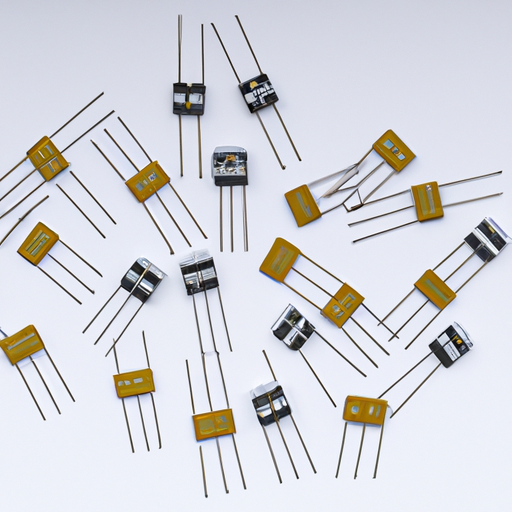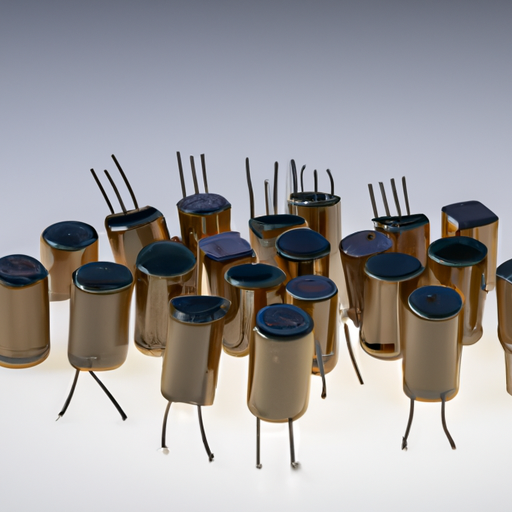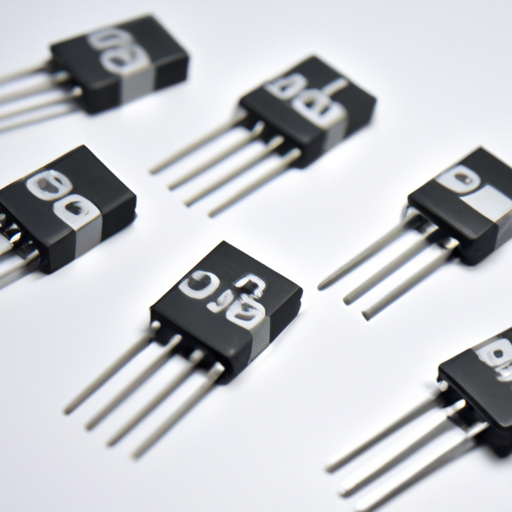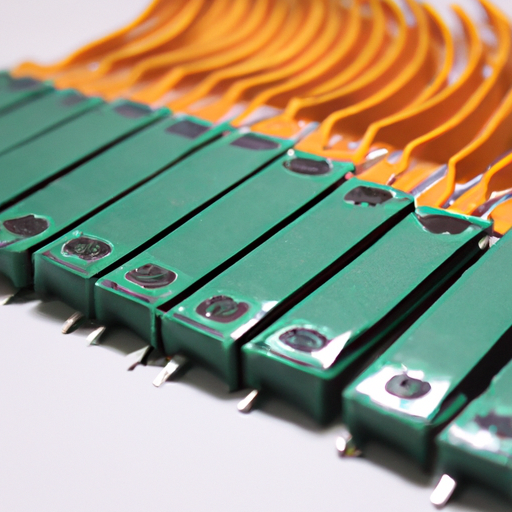Popular models of common chip adjustable resistors
Popular Models of Common Chip Adjustable Resistors
I. Introduction
Adjustable resistors, also known as variable resistors, are essential components in electronic circuits, allowing for the modification of resistance values to achieve desired electrical characteristics. These components play a crucial role in tuning circuits, calibrating devices, and controlling signal levels. This article aims to provide an in-depth understanding of adjustable resistors, particularly focusing on popular models of chip adjustable resistors, their specifications, applications, and future trends in technology.
II. Understanding Adjustable Resistors
A. What are Adjustable Resistors?
Adjustable resistors are components that allow users to change their resistance value manually or electronically. They are widely used in various applications, from simple volume controls in audio devices to complex calibration in industrial equipment.
1. Definition and Function
An adjustable resistor can vary its resistance based on the position of a movable contact or through electronic control. This variability enables fine-tuning of circuit parameters, making them indispensable in many electronic designs.
2. Types of Adjustable Resistors
The main types of adjustable resistors include potentiometers, trimmers, and rheostats, each serving different purposes and applications.
B. Key Characteristics
When selecting an adjustable resistor, several key characteristics must be considered:
1. Resistance Range
The resistance range indicates the minimum and maximum resistance values the component can provide. This range is critical for ensuring compatibility with the circuit's requirements.
2. Tolerance
Tolerance refers to the allowable deviation from the specified resistance value. A lower tolerance indicates higher precision, which is essential in applications requiring accurate resistance values.
3. Power Rating
The power rating indicates the maximum power the resistor can handle without overheating. This specification is vital for ensuring reliability and longevity in circuit applications.
4. Temperature Coefficient
The temperature coefficient measures how much the resistance changes with temperature. A low temperature coefficient is desirable for applications where temperature fluctuations are expected.
III. Common Types of Adjustable Resistors
A. Potentiometers
1. Definition and Applications
Potentiometers are three-terminal devices that allow for the adjustment of resistance. They are commonly used in volume controls, tone controls, and as position sensors.
2. Types of Potentiometers
Linear Potentiometers: Provide a linear change in resistance as the wiper moves.
Logarithmic Potentiometers: Offer a logarithmic change in resistance, often used in audio applications to match human hearing response.
B. Trimmers
1. Definition and Applications
Trimmers are small, adjustable resistors designed for calibration and fine-tuning in circuits. They are typically used in applications where adjustments are made infrequently.
2. Types of Trimmers
Screw Trimmers: Adjusted using a screwdriver, providing precise control.
Rotary Trimmers: Feature a rotating knob for adjustment, offering ease of use.
C. Rheostats
1. Definition and Applications
Rheostats are two-terminal variable resistors used to control current in a circuit. They are often employed in applications requiring high power handling.
2. Differences from Potentiometers
While both potentiometers and rheostats are adjustable resistors, rheostats are typically used in higher power applications and have a different configuration, often lacking a third terminal.
IV. Popular Models of Chip Adjustable Resistors
A. Overview of Chip Adjustable Resistors
Chip adjustable resistors, also known as digital potentiometers or programmable resistors, are compact, surface-mount devices that offer precise resistance control through digital signals. They are increasingly used in modern electronics due to their small size, reliability, and ease of integration.
B. Notable Models
1. **Model A: MCP4131**
Specifications: The MCP4131 is a single-channel digital potentiometer with a resistance range of 0-10 kΩ and a power rating of 0.1 W.
Applications: Commonly used in audio applications, volume control, and sensor calibration.
Advantages and Disadvantages: Offers high precision and ease of integration but may have limited resistance range for some applications.
2. **Model B: AD5206**
Specifications: The AD5206 is a dual-channel digital potentiometer with a resistance range of 0-100 kΩ and a power rating of 0.05 W.
Applications: Ideal for applications requiring dual-channel control, such as stereo audio systems.
Advantages and Disadvantages: Provides flexibility in design but may require more complex control circuitry.
3. **Model C: DS1803**
Specifications: The DS1803 is a dual-channel digital potentiometer with a resistance range of 0-10 kΩ and a power rating of 0.1 W.
Applications: Used in applications like gain control and signal conditioning.
Advantages and Disadvantages: Offers a simple interface but may have limitations in terms of maximum resistance.
4. **Model D: X9C103**
Specifications: The X9C103 is a digital potentiometer with a resistance range of 0-100 kΩ and a power rating of 0.1 W.
Applications: Suitable for applications requiring programmable resistance, such as adjustable gain amplifiers.
Advantages and Disadvantages: Provides a wide resistance range but may be more expensive than traditional potentiometers.
V. Comparison of Popular Models
A. Performance Metrics
When comparing chip adjustable resistors, several performance metrics should be considered:
1. Resistance Range
Different models offer varying resistance ranges, which can impact their suitability for specific applications.
2. Power Handling
Power handling capabilities are crucial for ensuring that the resistor can operate safely within the circuit's power requirements.
3. Size and Footprint
The compact size of chip adjustable resistors makes them ideal for modern electronics, where space is often limited.
B. Cost Analysis
Cost is a significant factor in selecting adjustable resistors. While chip models may offer advanced features, they can also be more expensive than traditional options.
C. Suitability for Different Applications
The choice of model will depend on the specific requirements of the application, including resistance range, power handling, and integration complexity.
VI. Applications of Chip Adjustable Resistors
Chip adjustable resistors find applications across various industries, including:
A. Consumer Electronics
Used in devices like televisions, audio systems, and smartphones for volume control and tuning.
B. Automotive Applications
Employed in automotive electronics for functions such as climate control and infotainment systems.
C. Industrial Equipment
Used in machinery for calibration and control, ensuring optimal performance.
D. Telecommunications
Applied in communication devices for signal conditioning and gain control.
E. Medical Devices
Utilized in medical equipment for precise calibration and control of various parameters.
VII. Future Trends in Adjustable Resistor Technology
A. Innovations in Materials and Design
Advancements in materials science are leading to the development of more efficient and reliable adjustable resistors, enhancing their performance and longevity.
B. Integration with Digital Technologies
The integration of adjustable resistors with digital technologies, such as microcontrollers and IoT devices, is expected to increase, allowing for more sophisticated control and automation.
C. Environmental Considerations and Sustainability
As the electronics industry moves towards sustainability, the development of eco-friendly adjustable resistors and recycling initiatives will become increasingly important.
VIII. Conclusion
Adjustable resistors are vital components in modern electronics, providing flexibility and precision in circuit design. The popularity of chip adjustable resistors continues to grow, driven by their compact size, reliability, and ease of integration. As technology advances, we can expect to see further innovations in this field, enhancing the capabilities and applications of adjustable resistors in various industries.
IX. References
- Manufacturer datasheets for MCP4131, AD5206, DS1803, and X9C103.
- Technical articles on adjustable resistors and their applications.
- Industry reports on trends in electronic components and sustainability initiatives.
This comprehensive overview of popular models of common chip adjustable resistors highlights their significance in electronic design and the future of this essential technology.





